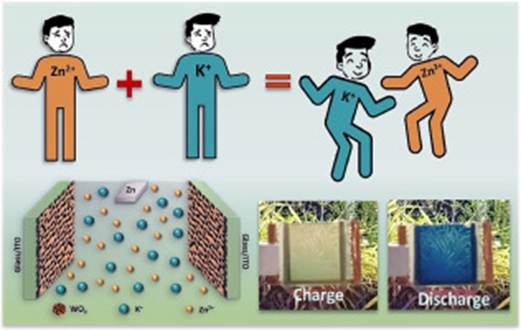Ministry of Science & Technology
New device enables smart windows to change color without external power source
प्रविष्टि तिथि:
11 FEB 2025 4:13PM by PIB Delhi
Researchers have developed a new generation of smart windows with advanced self-charging, color-responsive technology with integrated energy storage.
Conventional smart windows are only capable of modulating the transmission of light. Researchers have made a significant leap in smart window technology by developing innovative windows that not only change color but also possess self-rechargeable capabilities, making them a promising addition to modern buildings. These smart windows enhance aesthetics by seamlessly switching colors while simultaneously storing energy, a feature that could revolutionize energy efficiency in architecture.
For decades, the quest to fabricate functional windows has focused on boosting performance and adding new functionalities. However, when it comes to windows with energy storage and rechargeable capabilities, challenges like cyclic stability and the need for external power have restricted their widespread adoption.
Addressing these issues, researchers from the Centre for Nano and Soft Matter Sciences (CeNS), an autonomous institution under the Department of Science and Technology (DST) in Bengaluru, India, have developed a device that enables smart windows to change color without requiring an external power source.
A team led by Dr. Ashutosh Kumar Singh explored the integration of zinc-ion (Zn2+) battery concept in smart windows, utilizing tungsten oxide (WO3) as the primary active material in a paper published in the journal Energy Storage Materials.
A major finding of the study is the successful use of spray coating of tungsten oxide with ethanol as a solvent, which resulted in superior uniformity and film quality, due to the Marangoni flow effect (isphenomenon of a liquid moving from areas of low surface tension to high surface tension, in the way soap makes water flow away from dirty spots). Additionally, the incorporation of hybrid Zn-K electrolytes significantly enhanced both the electrochromic and electrochemical performance of the devices, achieving a high transmittance modulation of 50% and impressive cyclic stability lasting up to 10000 seconds.
The team successfully developed and tested a prototype device using the optimized WO3 sample and Zn-K electrolytes. The prototype demonstrated remarkable cyclic stability over 3000 cycles, rapid self-charging within 10 minutes, and reversible optical modulation of 40%, highlighting its potential for sustainable energy storage in future smart electronic applications.
This research represents a significant advancement in smart window technology, emphasizing the potential of WO3-based materials to create energy-efficient and sustainable electronic solutions. The findings pave the way for integrating these devices into smart electronics, potentially powered by renewable energy sources, marking a major step forward in the pursuit of sustainable energy solutions and demonstrating the practical utility of transparent batteries in modern technology.

Figure: Schematic representation of hybrid electrolyte. Configuration of an electrochromic battery (left), a visual representation of the device in charged and discharged states (right).
***
NKR/PSM
(रिलीज़ आईडी: 2101765)
आगंतुक पटल : 1093